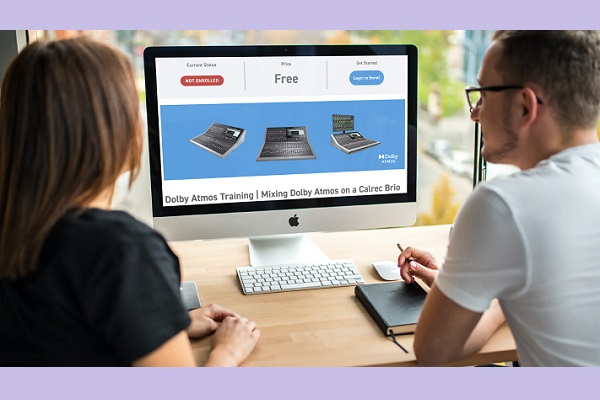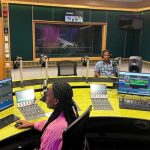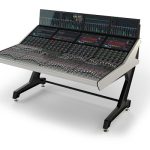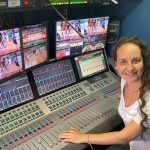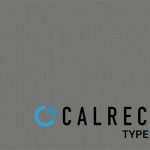The training modules will explain how to create and monitor immersive mixes with a variety of inputs on Calrec’s cost-effective Brio console.
Calrec, a manufacturer of audio broadcast equipment, has announced the launch of a free educational training module for mixing live broadcasts in Dolby Atmos using the Calrec Brio console.
The need to train people on how to mix in Dolby Atmos has grown rapidly through increased demand from service providers who want to deliver their live events in Dolby Atmos. These training modules explain how to create and monitor immersive mixes with a variety of inputs on Calrec’s cost-effective Brio console.
Now boasting 96 full DSP channel inputs, Brio is fully loaded with dynamics and delay on every path. Comprehensive automatic downmix facilities and the way its internal router allows post-fader outputs to be quickly patched as monitor inputs, make management of immersive channels simple.
Commenting on the training programme, Henry Goodman, Calrec’s Director of Product Development, said: “Mixing in Dolby Atmos enables the ability to place an audio source freely within a three-dimensional environment; not only within a 5.1 or 7.1 bed, but also overhead. Many larger consoles have features that make this easy, but assistive features on smaller desks can also help reduce the workload when it comes to NGA mixing for live broadcasts. For live broadcasts, all the Dolby Atmos work is done in real-time in the mixing desk rather than in post-production; there are no retakes in live TV so mix engineers have to get it right the first time, as well as create additional outputs for the host and international mixes, plus surround, stereo and mono versions!”
Mike Babbitt, Director of Solutions Engineering at Dolby Laboratories, added: “The broadcast landscape has changed rapidly over the last few years with the rise of live events delivered in Dolby Atmos, which is why online training courses are more important than ever. It has been great to work with Calrec on this effort, which will provide additional tools and resources that the next generation of broadcast mixers will need to meet this growing demand from service providers.”
Dolby Atmos takes entertainment to the next level through immersive moving audio that has the power to draw fans closer to the action as if they’re at the event. From major worldwide live events to local sports, broadcasters and streaming services are choosing to deliver their premium entertainment in Dolby Atmos to provide the home entertainment experience for their customers.
Stevie Kaura Jr, Senior Audio Mixer at ESPN, commented: “One of the things I love about Calrec and Dolby Atmos is how easy it is to set up. With Calrec you just follow the instructions and as long as your speakers are patched correctly… hey presto! Dolby Atmos. I also love the creative freedom Dolby Atmos provides. You can take a moving graphic that has noise associated with it and go to town by flying the noise almost anywhere. Does stereo still exist after Dolby Atmos?”
Josh Daniels, Audio Mixer for NBC and the NHRA, said, “Mixing in Dolby Atmos heightens the experience of live television production. I enjoy being on the cutting edge of technology and with Dolby Atmos, that’s exactly where you’re at. Mixing NHRA Drag racing has been a great experience for me and being able to do that in Dolby Atmos has given me a better appreciation for what I do. I’m trying to bring people that punch that Nitro cars deliver on every pass. Being part of creating and developing technology that pushes us to the next step is an amazing feeling.”
Understanding the impact of remote work and the shifting technology landscape is vital to the creatives who are responsible for bringing consumers great audio experiences. This is exactly the goal of this newly announced training course.




































































